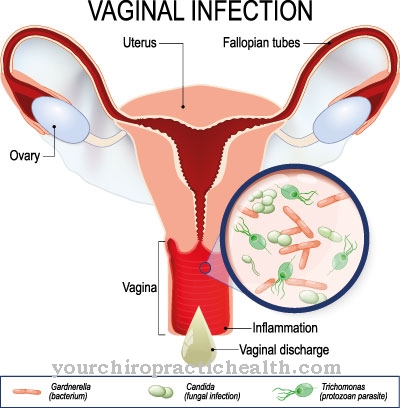Skeletal dysplasia are malformations of the bone or cartilage tissue. Many skeletal dysplasias are based on hereditary mutations. A causal treatment for genetic osteochondrodysplasias is not yet available.
What are skeletal dysplasias?

© paulrommer - stock.adobe.com
Dysplasias are malformations. Medicine distinguishes between different forms. Congenital forms are differentiated from acquired dysplasia, for example. All dysplasias are classified as pathological phenomena and lead to a visible malformation of tissues, organs or the entire organism.
A visible malformation can, for example, correspond to a displacement proportional to the body. Such shifts in body proportions are covered by the collective term of Skeletal dysplasia or Osteochondrodysplasia summarized. These types of dysplasia correspond to different developmental disorders of the bones or the cartilage tissue.
Different forms of skeletal dysplasia are distinguished. Depending on the exact localization of a skeletal malformation, medicine distinguishes, for example, epiphyseal, metaphyseal and spondylar forms. In addition, lethal forms of skeletal dysplasia are treated as a separate subgroup. In addition, there are symptomatic causal subdivisions. This results in subgroups such as skeletal dysplasias with increased or decreased bone density.
causes
Skeletal dysplasia can have different causes. In many cases, skeletal dysplasia occurs as part of a congenital syndrome. In the narrower definition, osteochondrodysplasias are caused by genes. Mutations in different DNA segments can lead to body elements involved in bone or cartilage formation no longer or only insufficiently functional.
Such phenomena are hereditary in many cases, but can also occur sporadically due to exogenous factors and are then referred to as new mutations. This summarizes mainly genetic defects with faulty differentiation, growth or formation processes of the cartilage and bones as the cause of skeletal dysplasia.
A distinction is made between growth and development disorders of the long bones or spine with earlier or later manifestation, bone density anomalies, structural defects or metaphyseal modeling defects and anarchic cartilage or fibrous tissue formation defects. Depending on the cause, there are exostoses, enchondromatoses, fibromatoses, osteopetroses, melorheostoses and many other sub-forms.
Symptoms, ailments and signs
The symptoms of osteochondrodysplasia show a wide range of variation. The skeletal changes can relate exclusively to body size, for example. But the body structure or its proportions can just as well be shaped by the changes in anomalies. Basically, the symptoms for individual skeletal dysplasias can hardly be generalized.
For all dysplasias of the skeleton, the only thing that ultimately applies is that the physical development of those affected does not correspond to the conventional picture. Common symptoms of skeletal dysplasia include shortened arms or legs. The severity depends on the exact disease in the individual case. Just as often, a misshapen spine can be symptomatic of skeletal dysplasia. Abnormal facial and skull shapes are symptoms of various skeletal dysplasias, such as micrognathia.
Apart from that, misalignments of individual limbs are a possible symptom of osteochondrodysplasia. The same applies to high fragility of bones, such as the one that characterizes glass bone disease. Especially in the context of hereditary syndromes, skeletal dysplasias are often associated with other malformation symptoms and even mental restrictions.
Diagnosis and course of disease
The diagnosis of skeletal dysplasia is made clinically and radiologically. The doctor usually develops an initial suspicion of a certain skeletal dysplasia through visual diagnosis, for example in the case of congenital dysplasias often immediately after birth. Some skeletal dysplasias can already be detected prenatally with fine ultrasound.
The diagnosis of dysplasia is confirmed by laboratory tests, which allow a differential diagnostic differentiation from bone diseases through metabolic changes. In the case of mutation-related skeletal dysplasias, molecular genetic examinations in the sense of a chromosome structure analysis can often provide evidence of a specific mutation.
This proof is considered to confirm the diagnosis and excludes, for example, dysostoses or metabolic disorders as a cause. The prognosis for patients with skeletal dysplasia depends primarily on the severity of the dysplasia, the affected body regions and the organic involvement.
Complications
Malformations of the limbs or the entire body are typical of all dysplasias of the skeleton. Complications arise if the respective dysplasia leads to restrictions in mobility or secondary diseases of the joints and bones occur. As a result of skeletal dysplasia, joint wear, cramps and fractures often occur. Circulatory disorders can occur due to the deformed or shortened limbs.
In individual cases, this leads to blood clots, which always represent a medical emergency. The conspicuous physical appearance usually also stresses those affected psychologically. Many sick people develop inferiority complexes and social phobias in early childhood or adolescence. Suicidality is also increased in people with pronounced skeletal dysplasia.
Treatment of the disease often results in minor and major complications. Surgical interventions are always associated with risks and occasionally cause infections or nerve injuries. The immobility of many people affected also means that the wound only heals slowly and that wound healing disorders and inflammation occur again and again. If gene therapy takes place, it can result in a serious disturbance of the immune system. If the course is severe, the therapy causes cancer.
When should you go to the doctor?
With skeletal dysplasia, the person concerned is usually always dependent on treatment by a doctor. This disease cannot heal itself. Since skeletal dysplasia is a hereditary disease, genetic counseling should also be carried out if you want to have children in order to prevent the disease from being passed on to future generations.
A doctor should be consulted if the person concerned has severe pain in the bones or a very unusual bone structure. This leads to malformations or malpositions on the skeleton, with the spine of the person affected being significantly deformed by the skeletal dysplasia. In many cases, the disease also leads to restrictions in movement. If these symptoms occur, an orthopedic surgeon must be consulted in the case of skeletal dysplasia. In the case of children, the parents in particular need to recognize the symptoms of the disease and see a doctor with their child. In most cases the symptoms can be relieved well.
Treatment and therapy
Since skeletal dysplasias in the narrower definition exclusively include genetic diseases of the skeleton, there is currently no causal treatment for patients with skeletal dysplasia. For this reason, osteochondrodysplasias are currently not curable. Gene therapy has made significant advances in recent years.
However, gene therapy approaches have not yet reached the clinical phase. Under certain circumstances, after approval, gene therapy will open up the first approaches for the causal treatment of skeletal dysplasia in the coming decades. So far, however, patients with osteochondrodysplasia have only been treated with symptomatic and supportive therapy.
The treatment therefore depends largely on the symptoms in the individual case. As a rule, orthopedic treatment is indicated that corrects misalignments, lengths and axial deviations as much as possible. However, orthopedic correction is not possible in the context of all skeletal dysplasias. Bone density disorders cannot be corrected by orthopedics, for example. It is different with anarchic bone changes.
For example, patients with such dysplasias can have their foci removed surgically. In the case of fatal skeletal dysplasias, supportive therapy is in the foreground. Patients with lethal diseases should be relieved of pain above all. In addition, the care of a psychologist can help the person affected and their relatives to deal with the situation.
You can find your medication here
➔ Medicines for painprevention
Many skeletal dysplasias have been researched relatively well today and can be diagnosed with approximately certainty by means of molecular genetic analysis. Since most skeletal dysplasias have a hereditary basis, genetic counseling in the family planning phase can be a preventative approach. Using genetic analysis, couples can have their personal risk for a child with various skeletal dysplasias assessed. If this is the case, the decision can be made against having your own child.
Aftercare
In most cases, those affected have only very limited options for direct follow-up care in the case of skeletal dysplasia. For this reason, the person affected should ideally consult a doctor at an early stage in order to prevent the occurrence of other complications and complaints, as this also cannot lead to an independent healing.
A doctor should be consulted at the first symptoms and signs of skeletal dysplasia. Since this is a genetic condition, it cannot be completely cured. Therefore, those affected should have a genetic test carried out if they want to have children in order to prevent the occurrence of other complications and complaints.
Many of those affected are dependent on regular checks and examinations by a doctor in order to check the symptoms regularly. The support of the family is also very important, as this can also prevent depression and other psychological upsets. Contact with other sufferers of skeletal dysplasia can also be useful, as this can lead to an exchange of information. The patient's life expectancy may be limited by this disease.
You can do that yourself
The possibilities of self-help are very limited in skeletal dysplasia. The malformations must be looked after and treated by a doctor, since alternative healing methods do not improve the structure of the skeletal system. The person affected can concentrate on promoting and supporting his or her mental health and can work closely with the treating doctor or therapist. Physical improvements are only possible to a limited extent.
Physiotherapeutic treatment usually takes place to optimize the movement sequences. The training and practice units learned there can also be used independently in everyday life. This procedure improves mobility and can contribute to an increase in wellbeing. Nevertheless, the patient lives with visual flaws and restrictions in movement.
In order to prevent the development of a mental illness, it is essential to strengthen self-confidence. The social environment should be sufficiently informed about the existing health disorder so that unpleasant situations in everyday contact are reduced to a minimum. Sports activities or other physical movements in everyday life must be tailored to the organism's capabilities. If necessary, family members or friends should be asked for help in completing certain tasks. Avoid situations of overexertion or excessive physical strain. These can lead to an increase in symptoms or further irreversible damage.


.jpg)


.jpg)





















